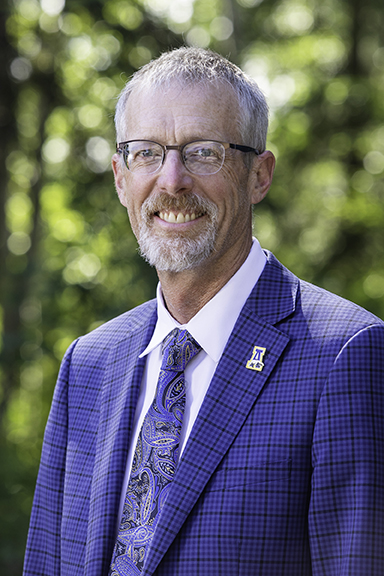Friday Focus: Being intentional about our future

Chancellor Dan White
March 31, 2023
— By Dan White, chancellor
In the past decade, enrollment goals in the UA system have fluctuated as chancellors, presidents and boards have worked to envision the role of the university in this great state of Alaska. Under former UA President Jim Johnsen, the UA goal was to have ~44,000 students, more than twice what we have now across the system. Under current UA President Pat Pitney, proposed enrollment growth is more modest, but the goal is to grow.
The university has weathered many challenges in the last decade, including an overall decline in enrollment. Since 2019, UAF has engaged in strategic enrollment planning under the leadership of Vice Chancellor for Student Affairs and Enrollment Management Owen Guthrie. We have made great strides in streamlining our enrollment process and turning enrollment around. We have gone from declining to growing enrollment. As we build back, and see positive enrollment numbers for the first time in several years, there is an opportunity to think and act intentionally about our enrollment goals.
As we strive to predict and project our expenses and revenues, this task is made complicated by the uncertainty in the goalposts – particularly around enrollment. Is the goal never-ending growth? As a university, we would make different decisions if we were preparing for a future of 8,000 students versus 15,000 students.
In a recent meeting with my core leadership team, we started a thought experiment about a clear, measurable and predictable enrollment goal for UAF. What would it mean for UAF to identify and work toward a fixed target, or “optimal” student enrollment? Not more and not less. This question is about starting to imagine how a stable and predictable enrollment could improve UAF decision-making and support our goals and those of UA and the state.
Like any good thought experiment, this question also opens the door to many other questions. If we set an optimal enrollment goal, how would we define the optimal mix of graduate students versus undergraduate students, e-learning versus in person, associates versus baccalaureate? How do these mixes influence and build on our other goals, like achieving R1 research status? For that matter, what is our goal for how much research we need? Is that always more or should we organize ourselves around a $200 million annual spend or a $500 million annual spend? If we stuck to a fixed goal we could gradually reduce our reliance on low F&A (facilities and administration cost) awards and increase our proportion of grants paying full freight – increasing net revenue to UAF and the state.
This discussion also begs the question of selectivity. If we capped our research university enrollment of degree seeking baccalaureate and higher at 10,000 (for example), but left open enrollment (unlimited) for non-degree seeking, online, associates/certificate degree seeking students and credentials, the selectivity of our research university would go up along with graduation rates.
There are many other ways a stable and predictable enrollment could improve UAF. It could help us better forecast the cost of going to college and increase the predictability in our tuition rates. This could help us predict and project facility needs, providing higher quality facilities, such as dorms and athletic spaces for the students living on campus. If parts of UAF were more selective, we could have higher graduation rates and be more efficient and effective in our job of meeting the state’s needs for a highly trained workforce. We could also more deliberately pursue our strategic goals by providing a clear picture of what UAF will look like five, 10, and 15 years down the road.
A stable and predictable enrollment could also provide the UA president, Board of Regents, Governor, and State Legislature with consistent and manageable budget requests. UAF might not need ever-expanding funding from the state, especially if we can do more to balance our expenses with tuition. This balance, over time, could reduce UAF’s reliance on state funding.
If we went down this path, how do we ensure UAF continues to be a place of inclusivity and belonging as UAF became more academically selective at the research university? How can we scale the resources we already have to act intentionally and deepen the quality of transformative experiences at UAF?
This discussion is very early and still needs dialogue across UAF, with the UA system and BOR. But as we explore this thought experiment, I encourage you to start engaging in the conversation within your own smaller groups. Explore the puts and takes of this line of inquiry. Early next fall I anticipate hosting a forum on the topic and welcome your thoughts then, now, or any time in between. After all, inquiry belongs at universities and it belongs here (and now).
Thank you in advance for your reflections, and thank you for choosing UAF.
Friday Focus is written by a different member of UAF’s leadership team every week.


